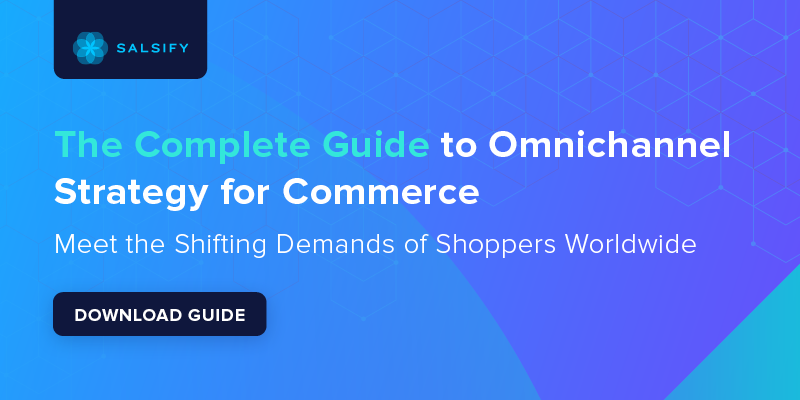Video Commerce: Live Stream Shopping and Storytelling for Brands and Retailers

Remember the 1980s? Big hair, huge synth noises, and gigantic deals on TV’s newly launched home shopping networks.
Revolutionary for their time, the networks combined the art of storytelling, salesmanship, and live product demonstrations that many home shoppers found — in the words of one of the era’s iconic crooners — “simply irresistible.” In its first year of sales alone, the QVC TV shopping network reached an estimated 8 million American homes and reaped sales of more than $110 million (PYMNTS).
With more consumers cutting the cord in favor of online streaming alternatives, marketers may wonder: Is there an appetite for this kind of content for a modern audience? In fact, there is — but no need to break out the Aqua Net.
Instead, savvy marketers are increasingly embracing a refined approach to this form of engagement: video commerce. Rather than rely on traditional broadcasting channels, this form of advertising embraces more contemporary modes of digital content — viral videos, online product demonstrations, and live streams — to deliver a captivating shopping experience right where customers congregate the most.
Here are some of the new and exciting ways marketers are reinventing video commerce for the digital age — and how these practices might help your marketing campaigns or bottom line, too.
Why Video Commerce?
Consider this: Research firm Statista found that live stream ecommerce sales — likely driven, at least in part, by pandemic-influenced changes in shopper behavior — grew to an unprecedented $5 billion in the U.S. alone. By 2022, that number more than tripled to $17 billion — and is forecast to do so again by 2026, ballooning to a projected $55 billion in sales.
The demand is there. But what (besides the conversions, of course) makes this medium of storytelling so attractive to marketers and consumers alike?
Visual Storytelling
While compelling product copy is always important, it’s pretty hard to understate the gripping power that a visual medium can exert on its audience. Video in particular — far surpassing even the persuasive capabilities of static images — can vastly amplify this effect.
Aside from creating emotionally resonant content that will connect your audience with your brand or product’s story, video also allows shoppers to see your products in action.
These videos can help address customer questions or other barriers to purchase while allowing your audience to vividly visualize how your product will fit into their lives or solve their problems.
Improved Engagement
Shoppers speak with their clicks, and it certainly seems they’ve expressed a clear preference for video: Explainer video company Wyzowl reports that “89% of people say watching a video has convinced them to buy a product or service,” and “91% of people say they want to see more online videos from brands in 2023.”
This likely doesn’t come as a surprise — videos allow brands to communicate complex messages, demonstrate unique use cases, and convey a brand personality in dynamic ways unavailable on other mediums.
Providing that level of clarity in the spaces where your customers spend the most of their time (i.e., online) will only add rocket fuel to your engagement rates, meaning longer viewing times, repeat visits, and ultimately increased conversions.
Building Trust
Trust is the bedrock of the ecommerce shopping experience. Consumers rely on visual content, especially video, to feel confident that your product, brand, and company will adequately address their needs.
Watching a product in action helps eliminate doubts about its functionality or quality and gives customers a sense of whether or not the purchase is right for them. Brands can also repurpose user-generated content (UGC) (more on that below) to demonstrate their perceived authenticity in the marketplace, as well as the reliability of their products.
Effective Approaches to Video Commerce
There’s more than one effective approach to video commerce — exploring these time-tested strategies will help you determine what might work for your brand.
Shoppable Videos
Shoppable videos act as something like a storefront within an ad. In other words, customers can watch the video, interact with it, and initiate a purchase within the content frame itself. Or, per Google, shoppable videos close “the gap between discovery and purchase.”
Providing a clickable call-to-action (CTA) within your video content removes hurdles to purchase that might otherwise stunt your customers, and is quickly becoming popular on platforms like YouTube and Instagram.
Image Source: TaylorHerrera111 TikTok
Live Stream Shopping
If you felt a certain pang of nostalgia when reading about the rise of home-shopping networks in the 80s and 90s, live stream shopping may hold a particular appeal.
Here, the “gap between discovery and purchase” is again removed, and instead, viewers are taken to a live stream where participants extol the virtues of your product, service, or brand. Unlike shoppable videos, these live events can be interactive, with the hosts answering customer questions and demonstrating case uses in real time.
Product Tutorials and How-Tos
Beyond hyping the benefits of your products, your videos can provide viewers with a different kind of valuable content — of the explanatory variety.
Step-by-step tutorials on your products can address concerns and obstacles identified in customer feedback and other market research. They can also clear up misconceptions or questions your customers might have and demonstrate that your brand is serious about satisfaction.
User-Generated Content (UGC)
Brands aren’t the only folks making compelling video commerce content — your customers, too, are bringing some worthwhile footage to the table. (Assuming you know where to look.)
Consumers are increasingly responsive to trend-setting approaches like unboxing videos, online reviews, and other influencer-style content that allows them to assess your claims about your brand through a trusted third party. Think of ways you might be able to take advantage of this on your own channels.
Best Practices To Get the Most Out of Your Video Commerce Content
Before brands start dipping their toes into video commerce, there are a few best practices worth keeping in mind to ensure you maximize the efficacy of your content.
Relate to Your Audience
You’ll never make content that impresses your audience if you don’t understand what makes them tick in the first place.
Ensure that your video content strategy is based on concrete metrics like consumer behaviors, interests, needs, and aspirations — or even, as some creative brands have done to great success, incorporate that feedback into your content. Why do your customers use your product? Why might they choose yours over someone else’s? What’s a use case for your product that could help an unaware customer?
For example, digital strategy research service RightMetric highlights how the action camera manufacturer GoPro is a great example of a company that has reincorporated its users' own footage into effective video content.
Understand Your Story
Have you drafted a brand guide for your business? If not, it might be a good time to sit down and articulate what your brand is — and isn’t — before drawing the curtain and sharing your story with customers on video.
Customers appreciate having adequate, concrete information about your product(s) to make informed decisions. However, they also need an emotional connection to feel inspired by your brand. They’ll quickly notice if your messaging seems off-putting, out-of-place, or simply inappropriate for your brand and audience.
Your narrative isn’t just a gimmick to move product, it’s a cohesive story that needs to make sense and drive shoppers to action, loyalty, and advocacy.
Maintain Authenticity
While customers will be quick to notice any off-brand messaging, they can spot inauthenticity almost instantly. It’s a given how important it is for customers to be able to trust your brand and its promises, and presenting authentically is an essential part of ensuring your shoppers can do exactly that.
Bombarded with potentially thousands of branded messages a day, an authentic brand story can feel like a breath of fresh air to the average consumer. It can also humanize your brand (another way to drive emotional resonance with the customer) and help you stand out from your less-authentic competitors in the marketplace.
Don’t be afraid to lean into your personality — as long as it’s not a costume.
Focus on Quality
The better the quality of the video, the more likely your customers will engage with, fully watch, and enjoy your content. Higher-quality videos are more likely to be shared, drive sales, and convince the customer that your brand takes its mission seriously.
If your production values look cheap, your customers will start to infer there might be other cheap elements of your brand. As the cost to create high-definition video continues to shrink, it becomes less and less excusable for brands to produce low-quality visuals.
The New Wave of Video Commerce
If you’re an ecommerce marketer, you’re well aware that one of the field’s few consistencies is change.
Video commerce, as an emerging juggernaut in online sales, is no different, and slated to be a driving force for transformation over the next four years. Brands that effectively leverage these channels will be well-positioned to ride out this coming wave of changes.

The Complete Guide to Omnichannel Strategy for Commerce
The world of commerce has changed — and will continue to change — but has your organization evolved to meet the shifting demands of shoppers? Check out Salsify’s guide for expert insights on omnichannel commerce’s revolution in the U.S., U.K., France, and Germany.
DOWNLOAD GUIDEWritten by: Chris Caesar
Chris Caesar (he/him) is a professional writer with two decades of experience working with national publications, as well as top software-as-a-service (SaaS) and technology brands. He is passionate about crafting high-quality, lead-generating content that drives awareness and action.
Recent Posts
Your Conversational AI Assistant: Why Ecommerce Chatbots Aren’t Just for Shoppers
Why More Consumers Lean Brand Agnostic and How To Win Them Back
Where Agentic Commerce Fits in the New Era of Shopping
Subscribe to the Below the Fold Newsletter
Standing out on the digital shelf starts with access to the latest industry content. Subscribe to Below the Fold, our monthly content newsletter, and join other commerce leaders.

.svg)